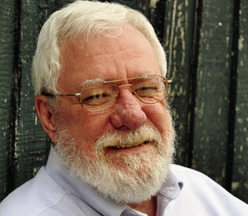When the prairies were isolated, and scary
The southwest Louisiana prairies were sparsely settled and a bit frightening until the railroad finally crossed them in the early 1880s and settlers began to establish towns and farms. Father P. J. Parisot, a priest based in Galveston, testified to that in a little book about his missionary work in the 1850s.
He crossed the Sabine in 1852 and wandered through what is now Calcasieu Parish for several months, “ending with a visit to Lake Charles and its three Catholic families.” He said in his autobiography that he was the first priest to come to the area in at least 20 years. (The Reminiscences of a Texas Missionary, San Antonio, 1899) “After crossing the Sabine River, I visited Calcasieu Parish, an immense district … [where] crossing bayous and bottoms, marshes and bogs … and getting lost on the pathless prairies were of frequent occurrence,” he wrote. There were no bridges in those days, and the bayous were “numerous and deep.” His method of crossing them was to “hold my horse by the tail with one hand and paddle with the other.”

Somewhere in the Calcasieu area he visited a small settlement of Caranchua Indians. He baptized eleven children there, when “a Creole gentlemen who spoke the dialect of the tribe stood as sponsor.” He also baptized the daughter of the chief, who was then in her fifties and came “a considerable distance” with her two children, who were also baptized.
The chief, “a stout man of 85, who knew a little broken English,” told the priest that “a long time ago he was owner of all the country around.” That was when his tribe was “plenty, plenty.” The old chief was also the doctor for his settlement, with a “pharmacy consisting of herbs, flowers, and roots of the forest of his kingdom.”
Father Parisot was heading back toward Texas when he had a chance encounter scary enough to make him say what he thought might be his final prayers.
“Turning toward the Sabine River, I met a crowd of Indians in the woods who nearly frightened the life out of me,” he wrote. “Were they gentle or wild? I said my Act of Contrition, and when they drew near, I tried to look pleasant and bade them good evening. They muttered a few words and passed by. My fear abated and my heart beat more regularly.”
He may have been unduly alarmed because he was a newcomer to the “wild west.” He left France in March 1852 as part of a group of “six Oblate Fathers and one Lay Brother, accompanied by four Nuns of the Incarnate Word, two Ursuline Sisters, four Brothers of Mary, and eighteen seminarians.” They made the two-month voyage to New Orleans and then to Galveston in response to a plea for missionaries by Jean-Marie Odin, newly appointed bishop in the Galveston diocese, which then included all of Texas. (Odin was later named Archbishop of New Orleans.)
Father Parisot made at least two more trips to Calcasieu Parish. On the second trip he was helped by “a French gentleman named Pujo” who was about to sail down the Calcasieu in a small boat. The priest went with him and “baptized on both sides of the river while the captain sold his goods.”
This was almost certainly Paul Rose Pujo, who came to Louisiana from France and who moved from New Orleans in the 1840s to Rose Bluff, a little settlement on the Calcasieu, and who later opened a store and saloon on the Lake Charles lakefront at the foot of Pujo Street, which is named for him.
Father Andre Borias came with Father Parisot on his third trip to Calcasieu, probably in 1854. Both priests were then stationed in Galveston, but Father Borias later became pastor at Beaumont and regularly visited the Calcasieu area from there. The registers of the Galveston Diocese show 129 baptisms were recorded in Calcasieu Parish during those missionary years. You can contact Jim Bradshaw at jimbradshaw4321@ gmail.com or P.O. Box 1121, Washington LA 70589.

